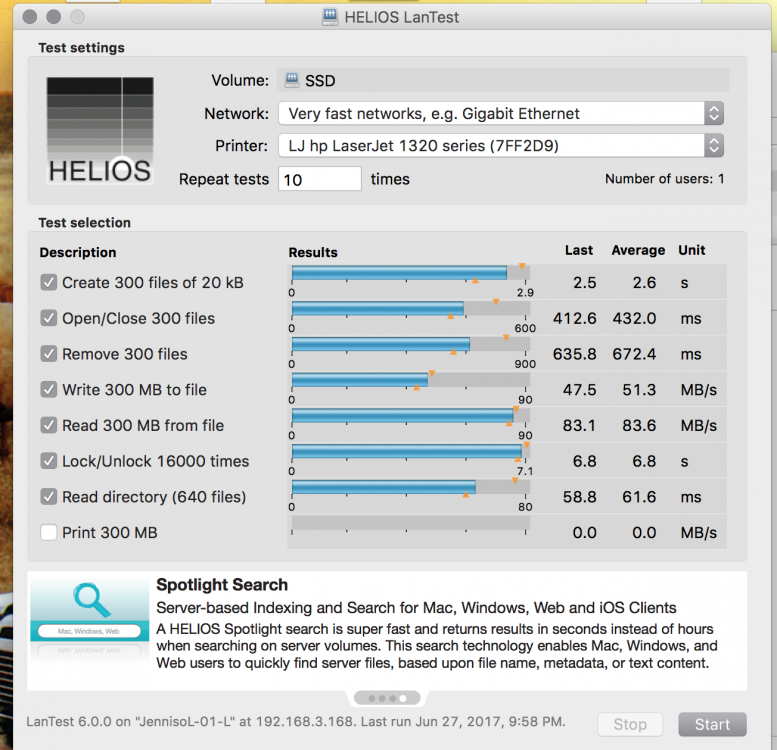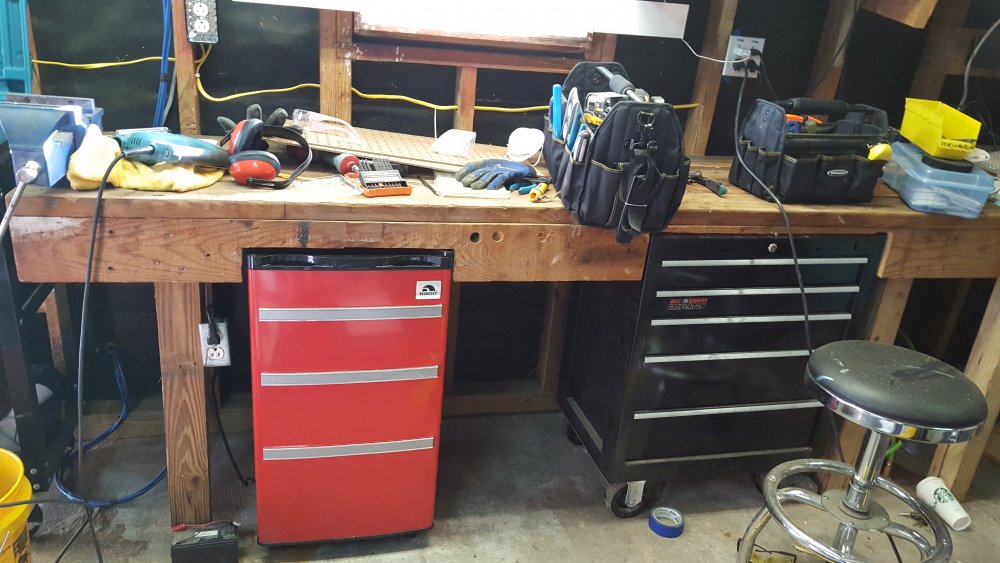-
Posts
1339 -
Joined
-
Last visited
Content Type
Forums
Store
Crowdfunding
Applications
Events
Raffles
Community Map
Posts posted by lanefu
-
-
19 minutes ago, Richard Stokes said:
It would get a lot more contributions if there was a step-by-step guide to setting up Armbian on the EspressoBin and getting more than just a minimally viable install going. For instance, not being able to upgrade right now due to the different Armada driver is a big deal. Everyone seems to have problems getting the LAN and WAN ports working independently (having both wan and eth0 interfaces is unique to this board, as far as I know). CPUFreq needs to be faster out of the box... defaulting to 200Mhz is crazy. I haven't experienced any overheating at all running at 1000Mhz. The bootup timeout on the eth0 interface defaults to 5 minutes as well.
These are just the problems I encountered so far. Not insurmountable by any means, but I bet there are a ton of people who tried to boot up their EspressoBin and just set it aside because of things like this.
I agree we need something clearer.... I made a gist a long time ago.. I'd welcome your CPUfreq tips.... I hadnt messed with the project in a while, so I'm trying to get a good picture of where things currently stand.
https://gist.github.com/lanefu/d7c0349a3efd63570798462a45fe0e34
-
12 hours ago, reverend_t said:
Openwrt uses a process called swconfig to configure the switch chips in these routers to support VLAN tagging. However, it only exposes the switch as a single network interface so that means that many things are impossible, such as per port/per vlan stats and STP (used to prevent loops from disabling large parts of your network). This is still immensely powerful. A £20 openwrt capable wireless router board from Aliexpress can be made to act as a gigabit managed switch running Linux. The possibilities that just VLAN tagging controlled by Linux provides are amazing!
Switchdev/DSA go one step further for compatible switch chips. They expose each port to the OS. Therefore they take advantage of the ability of the switch to perform hardware intra-VLAN routing, but also allow the rest of the system to get involved with inter-VLAN routing/STP/IGMP snooping and other higher level functions, including the use of the hardware accelerators as found in Marvell/Broadcom/Cavium/Mediatek SOCs.This would allow Linux-based switches to be as performant as the proprietary mnged switches from Cisco etc.
I've been super fascinated with the DSA stuff since my espressobin first exposed me to it's existence. The thing I don't quite grok with DSA is if I'm trying to do any layer 3 stuff on the switch ports, such as inter vlan routing is whether or not I'm always limited by the RGMII or whatever link the DSA chip is using to connect to the SoC.
You have described a pretty ideal board. A DSA with a cheap 4 core SoC is enough horsepower to brute force doing all sorts of cool network stuff without being so reliant on hardware offloading like on my EdgeRouter Lite. Now that VyOS has ported their build over to supporting Jessie, I've been hoping to eventually rig up a VyOS installer armbian similar to the OMV userpatches installer.
-
10 hours ago, reverend_t said:
Network manager's so frustratingly limited, it always pushes me back to using /etc/network/interfaces, especially when I'm using VLANs and doing any kind of complex routing/masquerading.
I'm really interested in these devices coming along with hardware gigabit switch chips (especially the Marvell and Broadcom BCM5XXX chips that can be configured using the Switchdev/DSA process), has anyone experimented with STP on the espressobin?
What's STP?
I was really excited about the switch as well.. currently disappointed about its single gig bus to the board. But this board is a HUGE bang for buck so I can't complain. it just needs time and contributions.
-
On 8/24/2017 at 4:51 PM, umiddelb said:
You may try the network configuration, I'm using for the espressobin (individual ports, no bridging):
auto eth0 iface eth0 inet manual hwaddress ether f0:ad:4e:03:6a:9f auto lan0 iface lan0 inet dhcp pre-up /sbin/ifup eth0 hwaddress ether f0:ad:4e:03:6a:a1Btw. has anyone succeeded to do the networking setup with pure nmcli ?
Cheers
Uli
So i did some digging on this a while back.. Essentially network manager is unable to classify the device type of the DSA-based ethernet ports, and consequently fails. The bridge configuration is a nice hack that gets around that constraint. Sorry I thought i had some notes posted on here about it.. can't find it now.
-
27 minutes ago, jessicajung said:
Hello, I bought Orange Pi Plus 2
and I have a banana router r1
on both devices I installed armbian it works good but I need just server + nginx + lua
could you please help me, how to reduce the size of installed OS because 1.6Gb its too much
Thank youHi @jessicajung You'll need to build your own image. You can customize what packages are selected to install during the build process by modifying the configuration. The image building process takes a little bit of time to get used to, but it's fun and very flexible.
https://docs.armbian.com/Developer-Guide_User-Configurations/
-
i got a new build host going so got to tinker a bit... I was having trouble with the toolchain not being in path when building espressobin using latest armbuild build tools checkout.
I set UBOOT_USE_GCC='> 7.0' in mvbe64.conf and that took care of it...... I send a PR later this weekend after i tinker some more.
What's everyone's preferences on u-boot? Are most using the built in u-boot on SPI, or using u-boot from sdcard?
-
2 hours ago, chwe said:
thumb up! Unfortunately, the guy comes never back to read my recommendations. Secondly I noticed that I can't give you a like for your last post. No idea if this is a (outdated) chrome on windows issue or that you just don't want any likes from me.

look for the heart
-
What are you Dev-ing?
I can share the opposite of what you're looking for since I do things the Site Reliability Engineer way.
step 1 is ssh into my orange pi 2e, then
- fire up ssh-agent
- fire up screen, or re-attach to screen session
- goto my local git repos for ansible and terraform etc
- fire up a terraform job to create an aws vpc, vpn, and spin up a c4 xlarge spot instance
- run ansible job to install my keys, check out github repos for armbian, and setup rsync
- ssh in
- fire up vim with tabs
- hack hack
- compile.sh
- hack hack
- compile.sh
- rsync image home
- dd image to sdcard
- rinse;repeat
- commit
- terraform destroy
-
3 hours ago, tkaiser said:
IMO we should also try to get images out that work with Marvell's u-boot present in SPI flash (so at least providing a symlink pointing to /boot/armada-3720-community.dtb and kernel image at the same location in correct format). It seems all ESPRESSOBin come with a Micro USB cable suitable for serial console so at least users could fix stuff at the u-boot prompt but at least I was not able to get a full serial connection (maybe my board is broken) and IMO it's better to avoid such hassles if possible.
I'm not sure even assuming board defaults is entirely safe.. mine had like TFTP or NFS boot defaults for testing or something.
Re usb serial -- I seem to have to use the USB + 12v power supply to get console. Then its interesting because the USB serial will then stay up, and you can just cycle the 12v.
-
6 minutes ago, tkaiser said:
Nope, you just tested two different things (one time with 'Gigabit Ethernet' and the other with 'Enterprise network' settings -- that's not just only 300 MB vs. 3000 MB test file size but more importantly 128K vs. 1M test block size -- and with SMB you used 1MB while just 128K with AFP now).
I bet it will also make a slight difference whether the SSD is on the real SATA port or connected to the ASM1062.
doh. iSuk.
-
bonkers
-
-
-
The board doesn't make a whole lot of sense to me. That being said I just pledged lol. Maybe because I like LoveRPi or maybe I'm just tired and thinking irrationally.
points of interest to me
- rpi form factor
- maybe h264 encoding that works
- probably pretty rad for an android desktop in the garage
-
On 7/1/2017 at 6:41 AM, Sergio Inacio said:
You are right zador, when i tried it breaks because the ubuntu:16.04 it is not for arm.
search the docker registry for armhf then youll find ubuntu and alpine containers to base your builds on. ioft/armhf-ubuntu:xenial is one i use a lot
-
1 hour ago, sniffyjaay said:
@tkaiser I'm looking for advice, I'm looking to use a single board computer of some sorts, to run a lightweight linux distro as a watered-down PC. Standard things like Webbrowsing, Netflix (Youtube, etc...), LibreOffice, etc.. can run on. Additionally I've seen some interesting videos of people running Python and I don't really understand the limitations of these boards. Are one of these boards equivalent to a circa 2000 PC? circa 2005? circa 1990s? Ideally I'd like to run a small standalone PC for day to day tasks and maybe some basic python or other coding environments. There's TON's of info online..which I've tried to go through myself, but again there TONs of info online. Would you have time to let me ask you a few questions, or help point me to threads for exactly what I'm looking for? Basically I want some sort of comparison and advice on what boards I should be using and WHY...your review on the banana pi M3 was awesome and I'm looking for information in that kind of detail except more on the OS side of it rather than the core functionality (i.e. read and write speed, clocking, etc..) I know while core functionality is where I need to start, I know efficient SW can make the most out of poor hardware and rather than reinvent the wheel by buying a bunch and testing them, I figure expect like you and another in the community might be able to help. I can't send private messages, but it being in a format of a forum doesn't bother me at all either
lol are you trying to write a magazine article? Break out your questions so they're a little clearer and maybe some folks will respond.
so all the SBCs make a mediocre linux desktop experience because of the video support etc. Using the SBCs as an Android Desktop would probably yield the best general experience.
Comparison.. uhmm how about better than a pentium III but not as good as a Core 2 Duo?
-
lol... back in old voip days. ....When I was your age we only had 1 codec and it was lossless and without compression?
Sent from my SM-G920V using Tapatalk -
you can do client server sound with pulseaudio. jackd/netjack also
Sent from my SM-G920V using Tapatalk -
22 minutes ago, TonyMac32 said:
Well, if the under-powered hardware is the talking point, I used my TRS-80 model 100 portable as a linux terminal just to prove it could be done...
haha.. My dad was a reporter so he used his TRS-80 model 100 until like 1999 or 2000. He'd always go back to it for writing his final copy. "6 hours of battery life on 4 AA rechargeables"
-
-
-
The CHIP is a cool little board. Ive got a pocketCHIP which is always surprisingly fun to use as a SSH remote control.
i gotta give nextthing credit for completeness.
-
whats mtd?
Sent from my SM-G920V using Tapatalk -
i searched for afp for like 2 seconds and couldnt find the plugin..
fiddled with nfs too... so many knobs to turn..
anyway the bad numbers are pretty good
Sent from my SM-G920V using Tapatalk






Espressobin support development efforts
in Marvell mvebu
Posted
feel free to update adn send me a PR.. then i'll go back and sanitize and get it ready for armbian docs